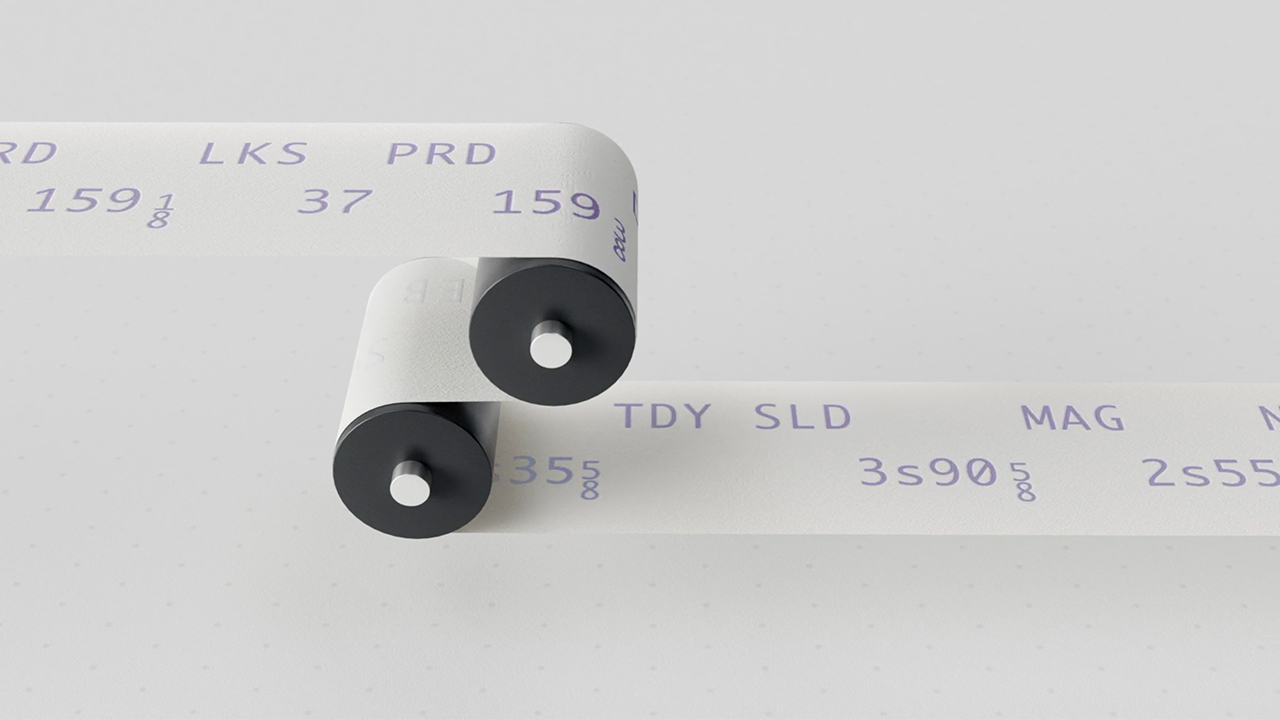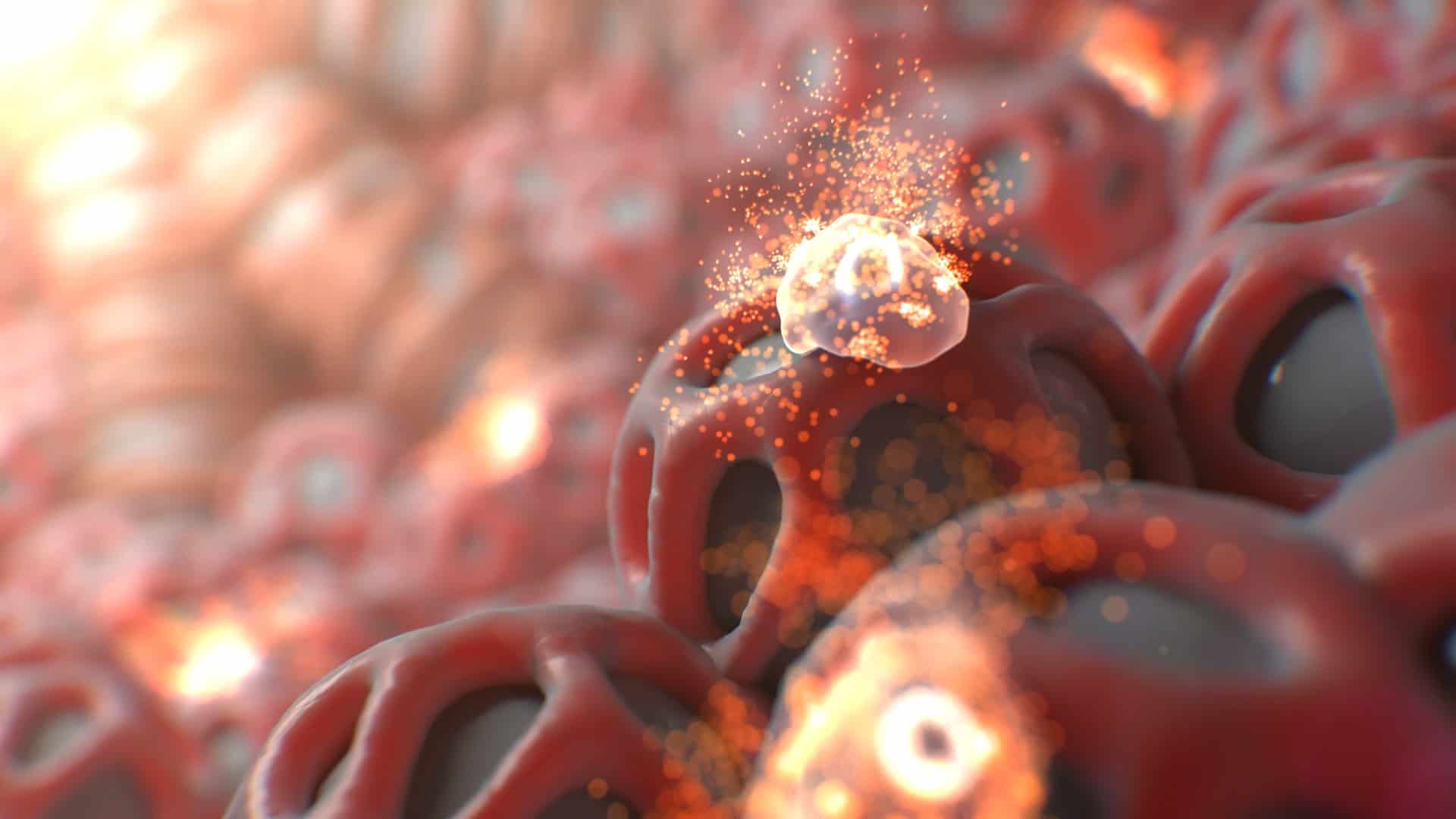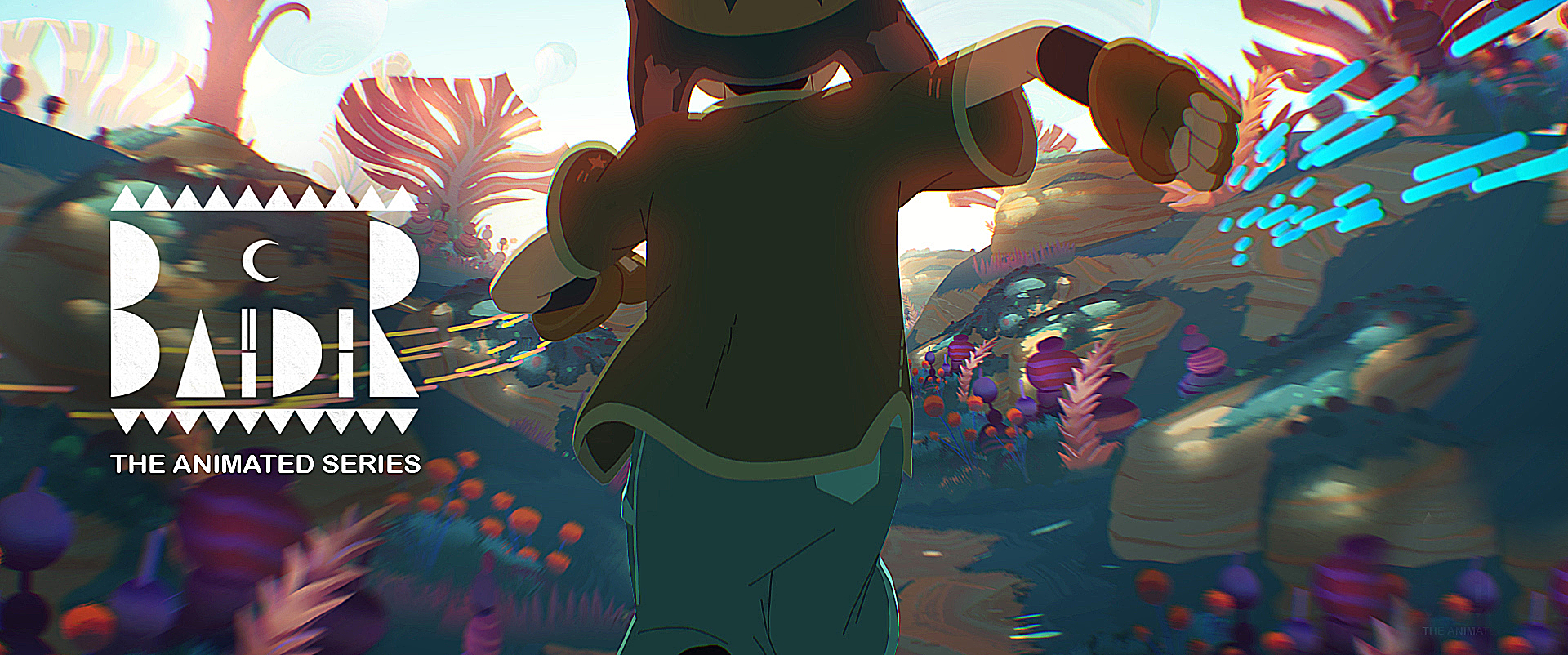
How Slimane Aniss combined 2D Japanese influences with Cinema 4D to create a trailer for his original series.
By Michael Maher
French director and motion designer Slimane Aniss always wanted to create an animated series and two years ago he got his chance. Fueled by funding from a successful Kickstarter campaign, Aniss and the team at Andarta Pictures were able to create storyboards and 3D previz that they turned into a spec trailer for his original series Baïdir.
Born from an idea to create France’s response to Japanese anime and shonen, “Baïdir” is a tale of a young boy chasing after his sister and her captors. We talked to Aniss about how he used Cinema 4D, Red Giant tools and Octane for the trailer, as well as how he balances the mix of 2D and 3D animation to create his out-of-this-world style.
Tell us about yourself and how you got into motion design.
Aniss: I have been doing this since 2005, which was really the beginning of motion design in France. I was a big admirer of American studios like Buck, Blur, Shilo and others, and I wanted to create work like that.
I earned two degrees in design and animation, so it was a pretty easy way to get into motion design. I started off doing some work in advertising, working for a luxury brand and also some video game work at Ubisoft Paris.
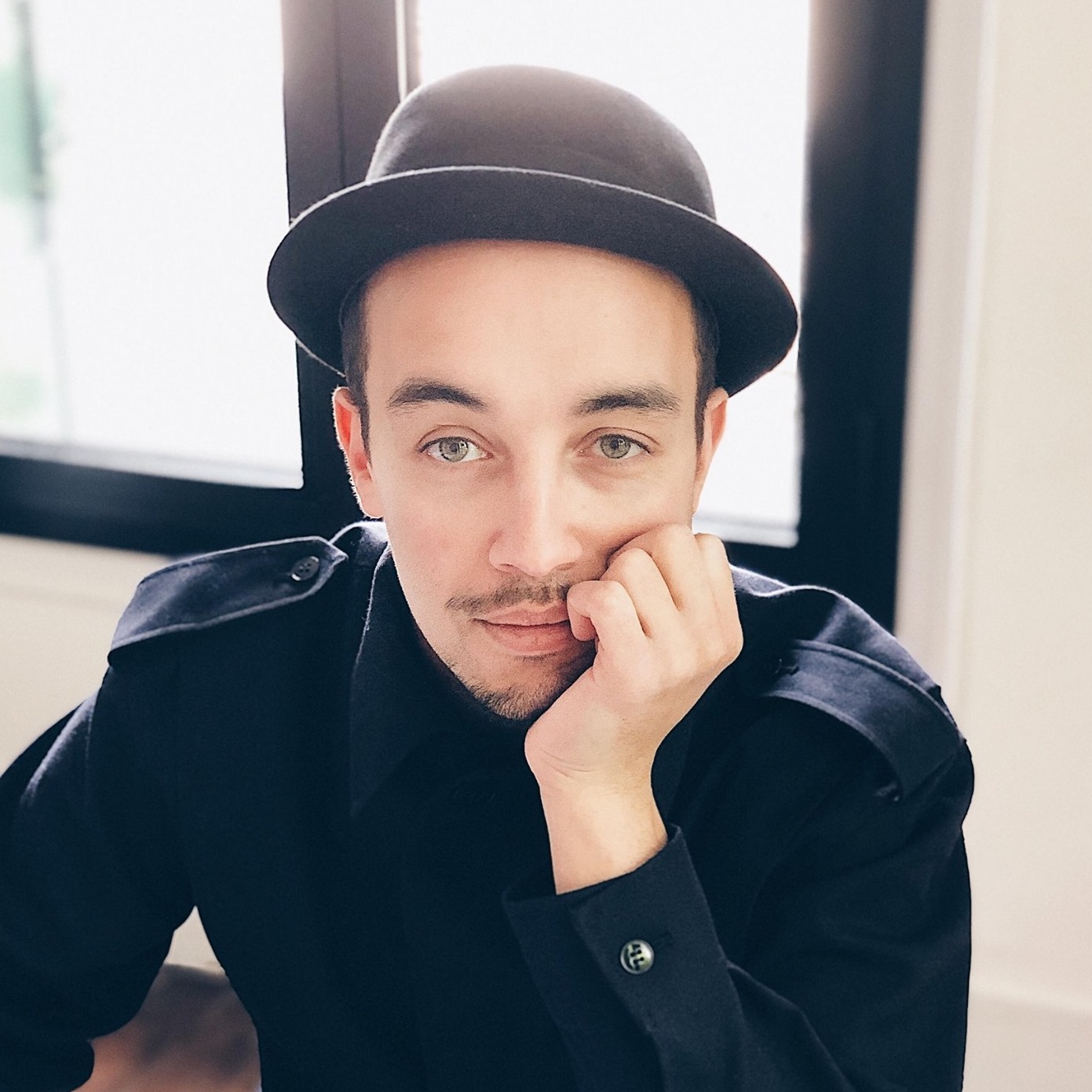
Talk about the mix of styles and concepts you brought to “Baïdir.”
Aniss: I am a huge fan of Manga and Japanese animation. When I was a kid, I never missed a Wednesday episode of “Dragon Ball Z.” I always wanted to create a Shonen, Japanese comics for young boys, and a French animated series. My idea was simple, a kid who has to look for his little sister on the other side of the galaxy.
Two of my best friends joined the adventure, Charles Lefebvre and Thierry Rivière. Together we decided to make an animated TV series produced at Andarta Pictures. At the time it was very difficult to produce that kind of continuing storyline in France, but streaming has given us more opportunities to tell this story.
Describe the story of “Baïdir.”
Aniss: The year is 2089. While environmental and climatic disasters ravage planet Earth a corporation by the name of Chrysalide is promising to ferry humanity to a new world called Eccoh. Nations pitch in to build a gigantic space fortress named the Ark. Materials are delivered to a huge construction site via twelve orbital elevators. Chrysalide controls the elevators and has hidden them in twelve distinct sites across the globe.
One day, Nayah is kidnapped by Farod, a strange character with gorilla-like features. Her brother, Baïdir, chases after them all the way to an energy portal. They disappear as they come into contact with the multi-colored rays of light.
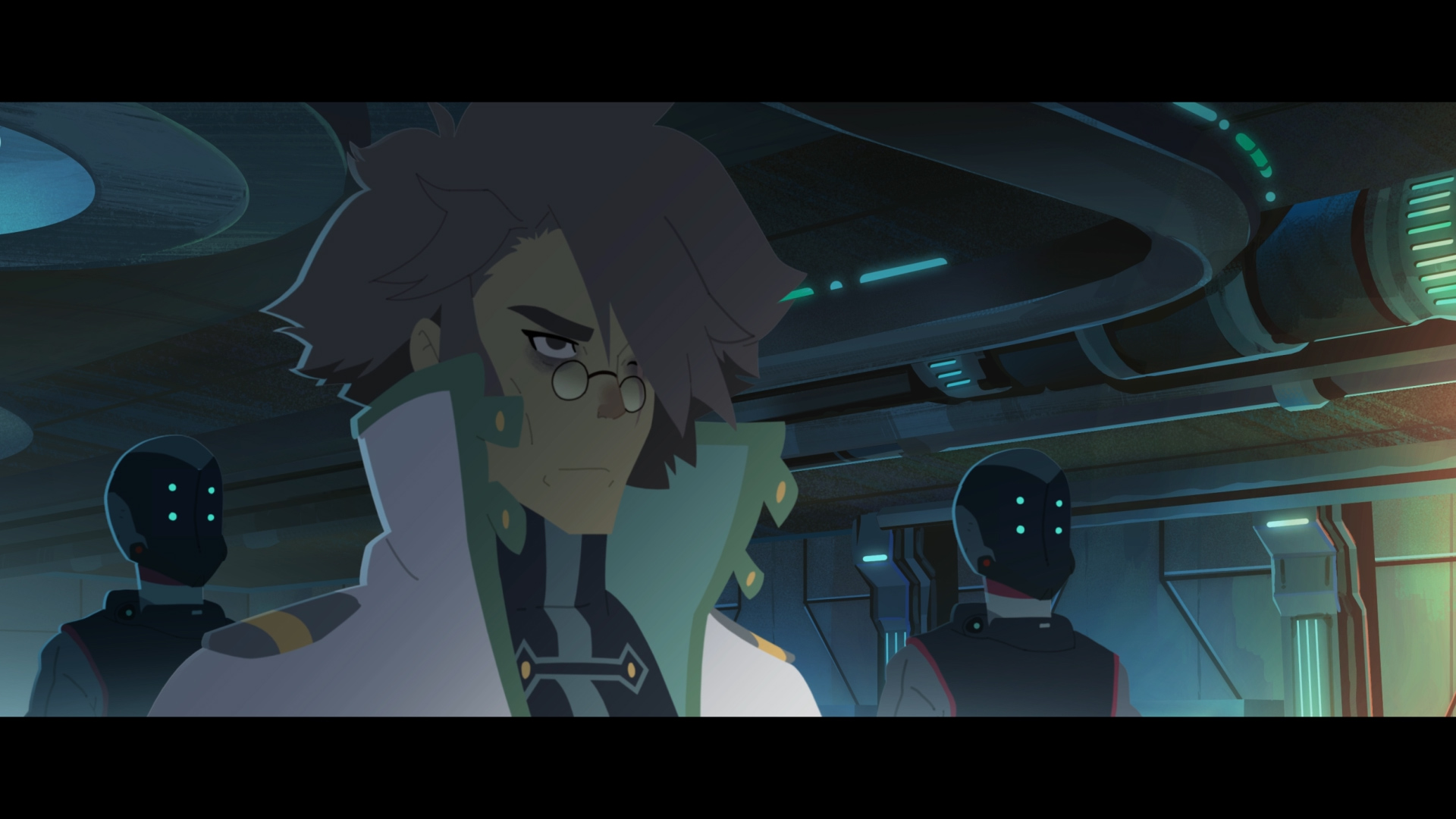
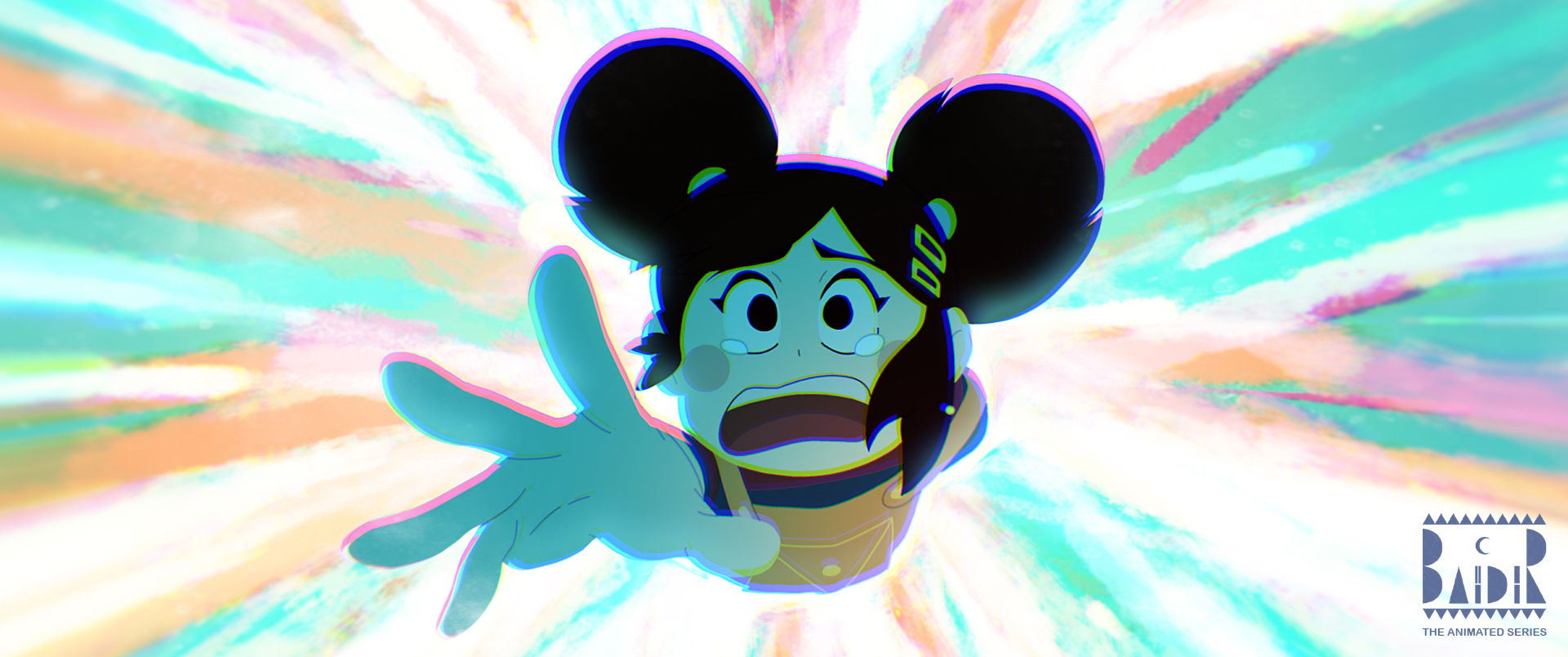
On the other end of the portal, Baïdir winds up aboard a mysterious vessel hovering over a forest of giant flowers. After an altercation with Farod, Baïdir gets thrown out of the vessel. Lost in an unknown world, in a landscape both marvelous and worrisome, he sees Nayah’s kidnappers’ vessel moving out of his line of sight, over the horizon. Baïdir is now alone.
Tell us about how you blended 2D and 3D for this project.
Aniss: We have a complete 3D/2D process that allows everyone to have a solid 3D base to work with. I started with a first-draft storyboard to set up the shots and rhythm using placeholder music from Adrien Sepulchre. Then Charles Lefebvre refined each shot to create the animatic.
Next, I set up a 3D layout for every shot. Every shot was prevized in 3D. It helps me as a director to be sure about rhythm, camera angles and the match to music. I used the same 3D scene for the camera mapping and final comp and I tried to use a lot of geometry in the previz, which made each of the following processes easier. Cinema 4D and Octane were used to set up the lights in real time and for camera mapping I just used the standard render engine.
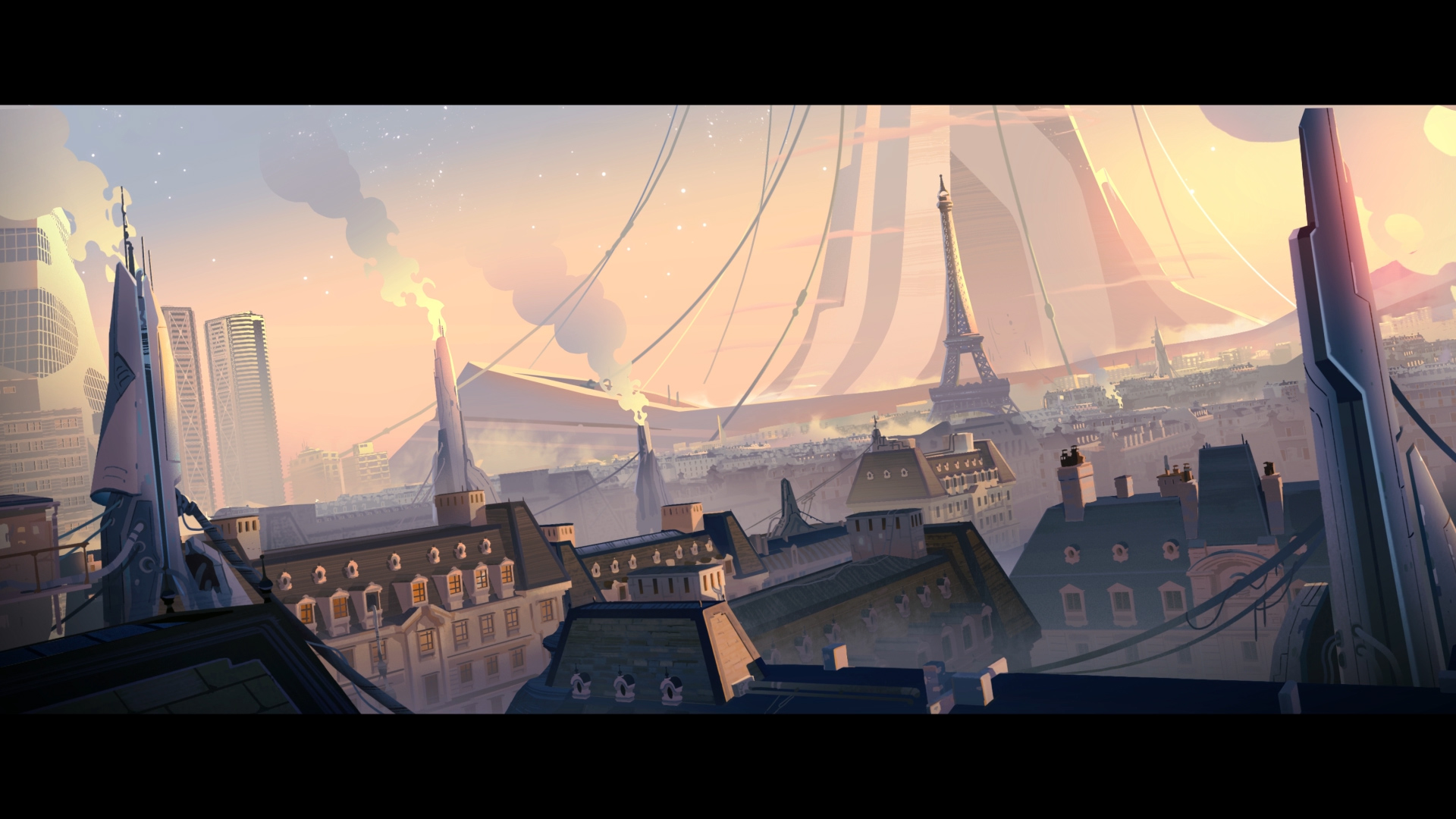
KitBash3D helped us a lot for the sets. You can see in the first shot that I kitbashed Art Nouveau and Utopia together to quickly set up a futuristic Paris. It helped me to find a good angle shot and light based on the color key we created. I did multiple passes with Octane to make the background color process easier and Victorin Ripert, our 2D animator and background artist, took that to work on the animation. I did the compositing to mix the animation and background using my 3D layout.
The Kickstarter campaign was a big success. What’s happening with the film now?
Aniss: The Kickstarter campaign helped us finance the trailer. It was my first campaign and I have to say I was stressed out. I didn’t know if people would support this. It was a huge success so I’m hoping it leads to us finding a broadcaster. Fingers crossed. Also, I just finished a new trailer using the same techniques. It’s for a new secret TV show project with French Studio Cyber group and it will be online soon.
Michael Maher is a writer/filmmaker from Dallas, Texas.



